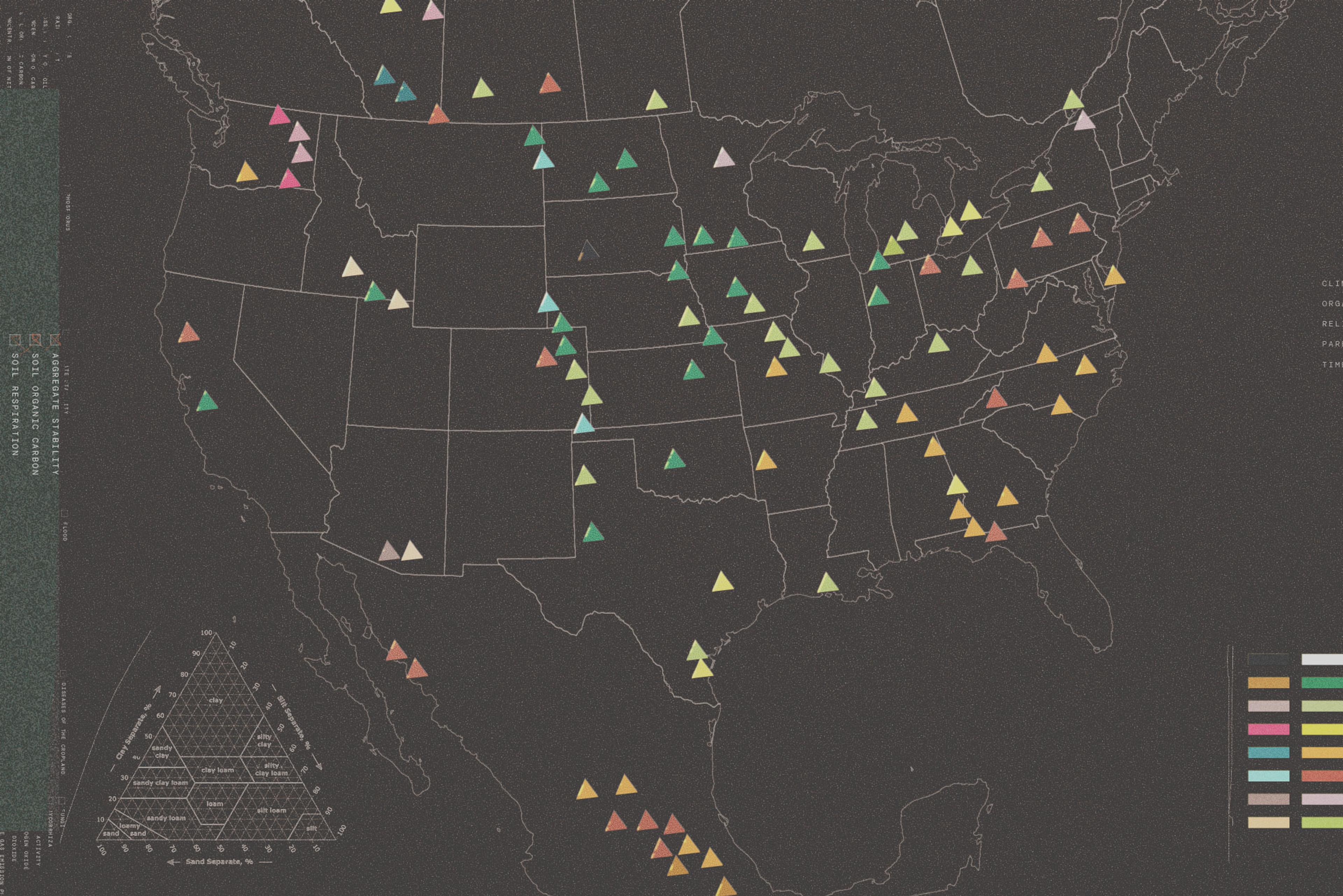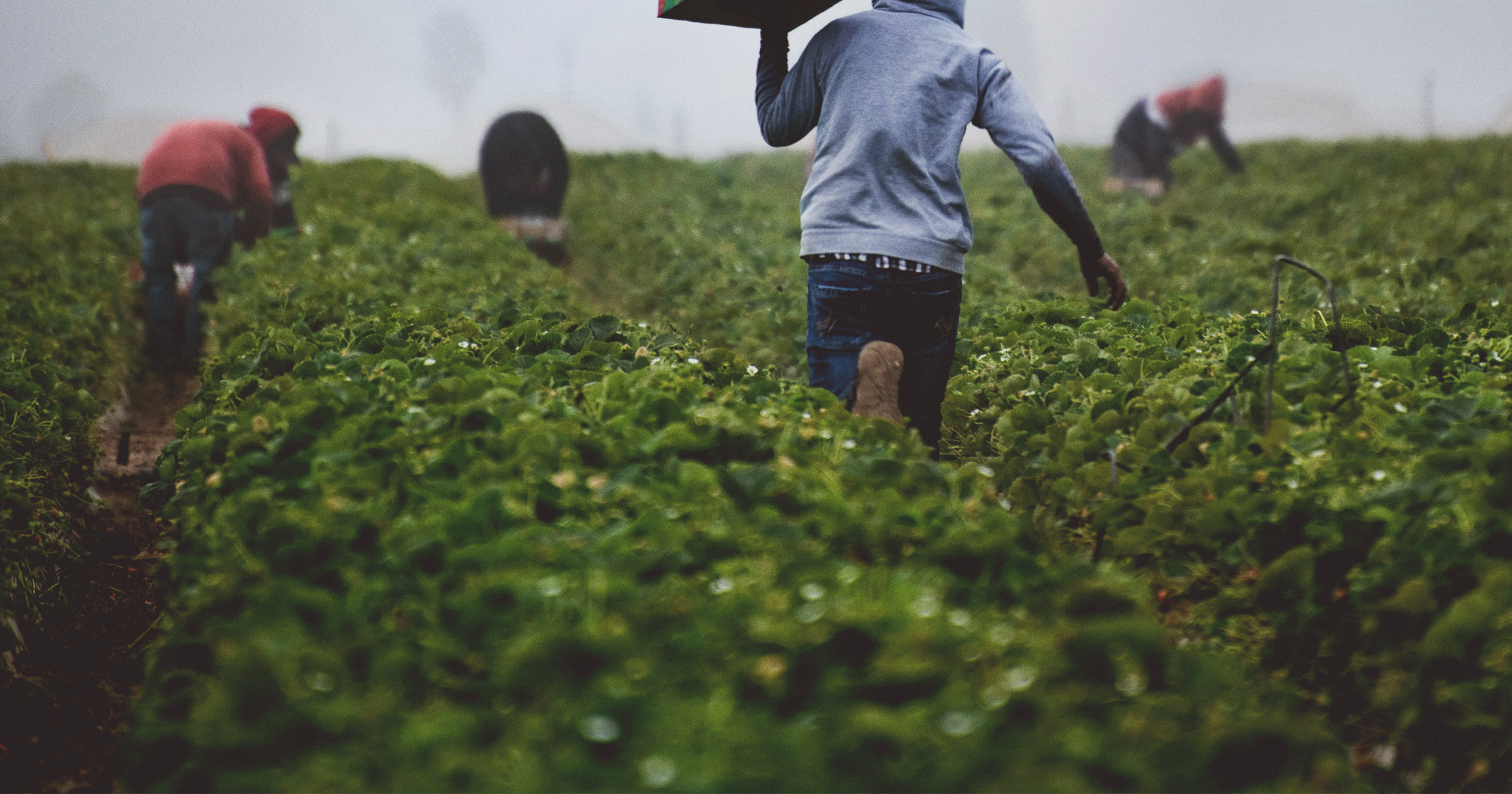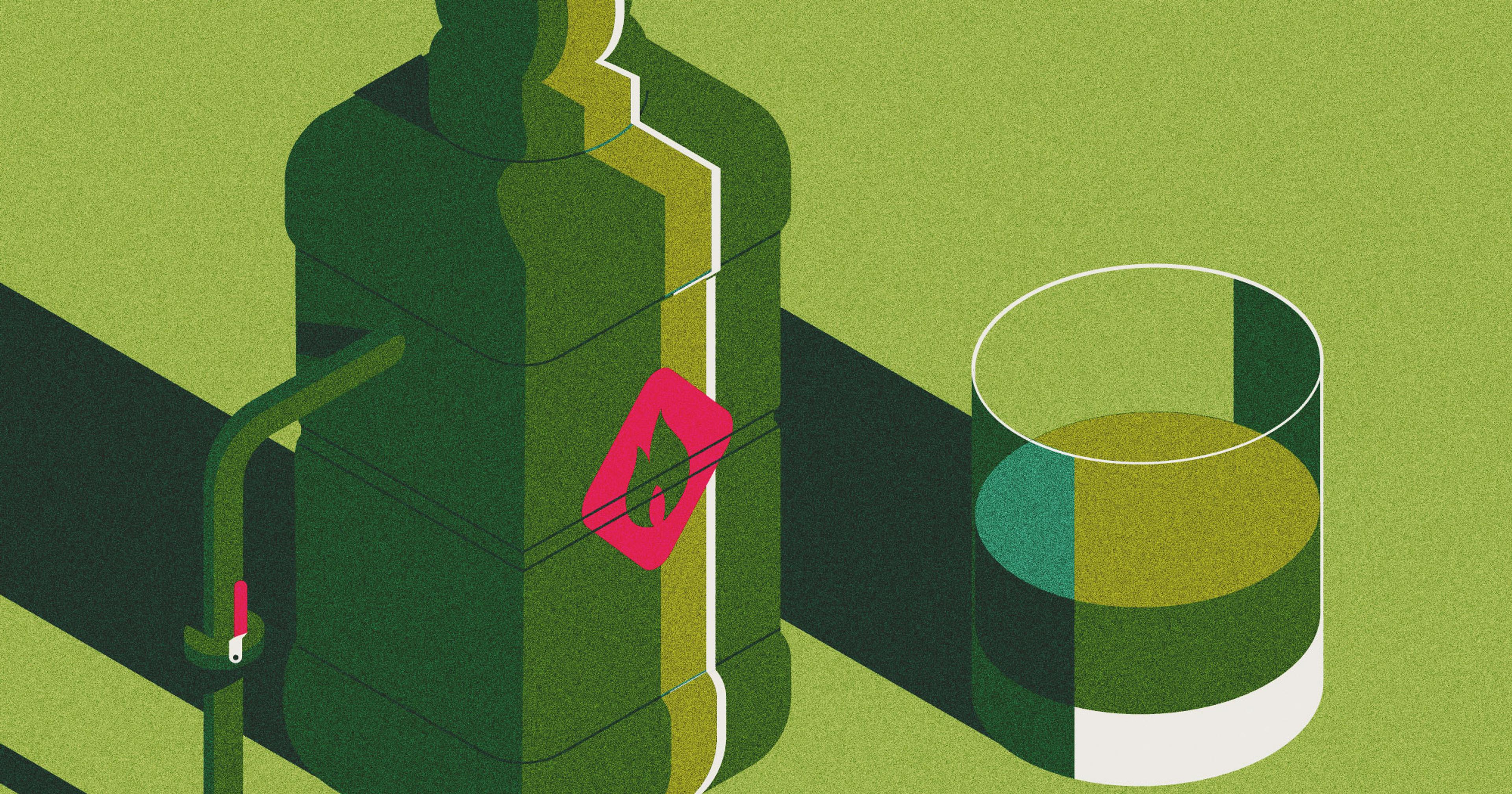Previously dismissed as squishy and vague, soil scientists are embracing the term to advance protecting the precious resource.
While completing her PhD on forest soil formation, Jenny Bower went to a conference and heard other scientists discussing “soil health.” “I actually laughed a little bit at the concept of soil health when I first encountered it,” she recalled. It seemed vague at best, unscientific at worst. For instance, a desert soil may not seem “healthy” from an agricultural perspective, but it nonetheless supports an arid ecosystem. Bower added, “It’s healthy for the ecosystem that lives on it.”
Today, Bower has done a complete 180; she now works for the Soil Health Institute, aiding Ontario farmers in measuring and setting goals for their soil. While initially skeptical, she now believes soil health to be a useful — and measurable — concept. “We’ve rapidly eroded a lot of the most biologically active part of our soil that feeds us and clothes us,” said Bower. “Having a way to relate the condition of that soil to its capacity to function is really important.”
In recent years, soil health has captured the public imagination, bolstered through documentaries like Kiss the Ground and Common Ground, alongside celebrity endorsements and advocacy. The term has grown to mainstream status, with backing from giants like Cargill and Bayer. But many soil scientists — of all people — initially dragged their feet, cautious to embrace a subjective standard over more quantitative measures.
But now, amid pressures like climate change and degradation of farmland, the scientific community is coming around to the intuitive term. Further, researchers are honing measures of soil health to take it from a fuzzy ideal toward an actionable goal.
While they’ve shied from squishy terminology, soil scientists have long recognized soil as a dynamic, living system. In 1941, Hans Jenny described the factors of soil formation: climate, organisms, relief, parent material, and time, or CLORPT. In a 1959 paper, one scientist defined soil as the “excited skin of the subaerial part of the Earth’s crust.” Yet, in a practical sense, soil has often been treated as an inert medium for farmers, where the primary goal is adding inputs to improve agricultural outputs.
But the last 20 years has seen an adoption of more holistic definitions, with the USDA asserting that soil “is not an inert growing medium — it is a living and life-giving natural resource.” The agency defines soil health as the “continued capacity of soil to function as a vital living ecosystem that sustains plants, animals, and humans.”
Initially, the term made many soil scientists uneasy, because what makes a soil “healthy” is so subjective. “It depends on which function you are assessing,” said Rosa Maria Poch, a soil scientist at Universidad de Lleida in Spain. A water-logged peatland may not grow crops, but it’s a valuable carbon sink. Likewise, a saline soil may shrivel vegetables, but it supports unique plant and animal species.
Even among cultivated soils, defining health is hard. Depending on factors like climate and what minerals make up the soil, its potential reservoir for carbon, water, and nutrients varies — remember CLORPT? And a “healthy” soil is not even always desired. For instance, viticulturists want their vines to be somewhat stressed. In a too-fertile soil, the grape plants will direct nutrients into growing lots of leaves. Hungry vines instead divert more resources to berries, leading to a better harvest, said Ryan Stewart, a soil scientist at Virginia Tech.
“Having a way to relate the condition of that soil to its capacity to function is really important.”
Despite these challenges, recognizing its intuitive appeal to the public, soil scientists are homing in on ways to measure soil health. “It’s got a lot of people excited about soils and the role of soils in the environment,” said Cornell University soil scientist Harold van Es, “because people sort of get it — they understand that this is important.” Much of the public excitement stems from the ability of soil health practices to deliver the added benefit of storing carbon from the atmosphere, aiding in efforts to slow climate change.
The challenge for measuring soil health is two-part: choosing which indicators to use, and defining what’s healthy for a given plot of land.
There are numerous measures that relate to the soil’s function in an ecosystem or farm. One soil health database, for example, includes 42 distinct factors. But, in order to be practical, scientists must narrow down which of these indicators say the most about a soil, while being responsive to management and relatively low cost, explained van Es. “It’s just like human health,” he said. Similar to how a simple measure like blood pressure can nod to cardiovascular health, these indicators can draw a picture of the soil’s overall condition.
One indicator that’s proved to be reliable is aggregate stability — the ability of the cookie crumb-like chunks of soil to remain clumped together when splashed with water. Stable aggregates mean that water can readily seep into soil, instead of running off the surface, and that the soil is resistant to erosion; they also mean the soil is relatively loose and easy to root in. “That tells us a lot about a whole bunch of processes that are important in terms of the functioning of the soil, and therefore, the health of the soil,” said van Es.
Other key indicators that van Es and other researchers have identified include carbon content and respiration — the rate of carbon dioxide produced by microbes in the soil, which shows how biologically active it is.
Now, these indicators are also in the spotlight among policymakers. In 2021, the state of New York passed the Soil Health and Climate Resiliency Act, which requires setting voluntary standards for soil health. Toward that goal, Cornell scientists prepared a statewide assessment, testing soil samples using Cornell’s parameters across pasture, vegetable, grain and orchard systems.
“If they give us 30 things to measure, and it’s gonna cost me $7,000 per acre to figure that out — well, that’s not feasible.”
Recently, the team debuted their tailored approach to soil health, and is currently soliciting the public’s input. Their proposed benchmarks consider a soil’s location in the state, as well as what the land is used for. They argue that land use consideration is key because it’s unfair to compare, say, a pasture to an annual grain system. A pasture isn’t tilled, allowing grass roots to stabilize the soil and add organic matter to it, while the intensive soil turning and harvesting of grain systems depletes soil carbon and structure. The idea is for producers to know, based on their system, what realistic goals for aggregate stability, soil carbon, and other indicators could be.
Elsewhere, researchers are refining soil health assessments, sensitive to the unique properties of their landscapes. In Hawai’i, for example, the soils are formed from volcanic rock and ash, which weather into tiny clay particles with lots of surface area relative to their volume, making them more reactive with organic matter and nutrients, said Susan Crow, a soil ecologist at the University of Hawai’i Mānoa. A “high” value for nutrients and organic matter will be relatively higher in these soils than sandier ones.
Bower’s organization, the Soil Health Institute, is trying to take their approach across borders. The nonprofit team evaluated more than 30 soil health indicators across over 100 sites in North America, observing how each one responded to changes in management such as adding cover crops. They narrowed the indicators to just three: aggregate stability, soil organic carbon, and soil respiration. By making soil health as simple as possible, the institute hopes to inspire widespread soil health monitoring, said Bower.
The hope is that this streamlining will help turn soil health from a vague ideal to a concrete goal for farmers. As farm owner Zaid Kurdieh of Norwich Meadows Farm in upstate New York put it: “If they give us 30 things [to measure], and it’s gonna cost me $7,000 per acre to figure that out — well, that’s not feasible.”
Tying soil health into incentive programs may help. The Hawai’i index will be used in a program paying land managers for carbon sequestration and building healthy soils. “The Hawai’i soil health index allowed us to really lay the foundation for a more holistic definition of what is climate-smart, because so much benefit comes out of a healthy soil,” said Crow. The Soil Health Institute’s test is eligible for coverage by USDA funds, added Bower.
After Cornell researchers tested his farm’s soil health, Kurdieh learned, “We’re doing better than we thought, but it’s never good enough in the sense that it could be better.” He plans to keep building on practices like crop rotations and cover crops to see if he can increase his organic matter further, bringing his soil score up.










